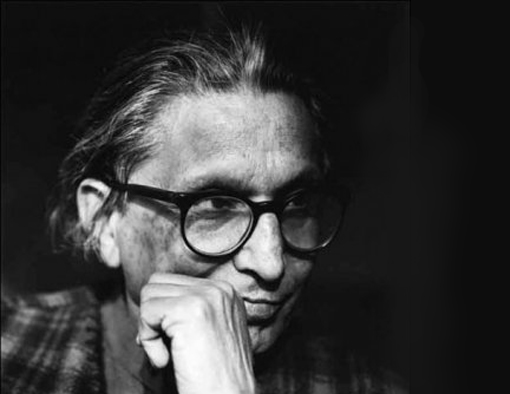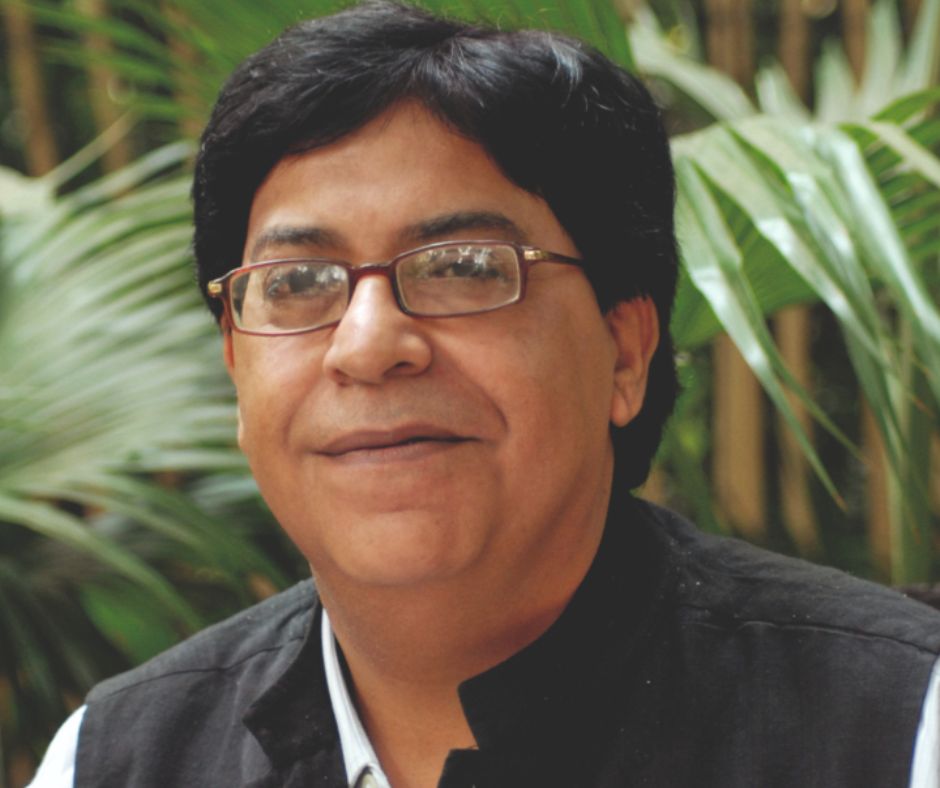B.V.DOSHI
1927 – 2023
The architect, educator, visionary, Balkrishna Vithaldas Doshi has ceased to be amongst us. He has passed through the great vault of the sky to become one with the infinite cosmic order he so often spoke about. An order that he had spent a lifetime transcribing into his work; through his mind as well as his heart. His was a relentless decoding of the very meaning of life each and every time he addressed another project. Functionality, material form, the ephemeral nature of light and shade were, for him, a given. Deep down his intuitive engagement was always with the metaphysical nature of the building, it’s soul. And deeper down, it was about people and about life. For him the nobility of our discipline was expressed in the act of inhabiting. That crossing of a threshold which, in a sense, gives life meaning; a third ‘skin’, so to speak, between the tangible one we are born with and that grand abstract one, of the universe. Metaphorically that was the breadth of his engagement and of his vision – both personal and universal.
Pico Iyer, in an essay titled Stillness, refers to how our infatuation only with the intellect has left a sort of void at the core of our being. Intellect without heart. And this shows not only in our personal, but in our collective life as well. It has carried over into our discipline where the desires and dreams of people are sometimes at the bottom of the heap. But for Doshi the heart mattered, people mattered. Whether it be the occupants of his numerous social housing projects, or his many institutions of learning or those of commerce or culture, he saw humane ways to express an idea. Ideas that centred around people, giving them tangible and intangible spaces to express their hopes and aspirations. His architecture always adding another dimension to their lives; of the individual, the family and that of the community.
A small group of us in Bangalore had come to know him intimately during the 1980s when the construction of his magnum opus, the Indian Institute of Management, was underway. He came often enough for us to absorb the trajectory of this project. From its conception inspired, he said, by the complex imprint and spatial geometry of the Meenakshi Temple in Madurai. He abstracted these ideas to create an architecture for formal learning as well as, to paraphrase the Dutch architect Herman Hertzberger, an architecture for the unexpected. When the first phase was over we marvelled at how that early inspiration receded into a pale watermark vis-a-vis the robust modernity that eventually came into being – an Institution for Learning. Learning that happens within and outside the classroom through chance encounters in the vast and voluminous corridors of the building. He had honed his ideas some twenty years earlier in the design of the CEPT School in Ahmedabad even though the two buildings were different both in program and in scale. On the many trips we made with him, undertaken both in the day as well as on moonlit nights, his childlike enthusiasm always came to the fore. But in his spontaneous sharing he was also reflecting and questioning what he had done, and encouraging us to be part of the conversation. Each of us felt being part of that timeless guru-shishya experience.
He was the most fêted of our architects, both nationally and internationally. Numerous awards came his way eventually culminating in the architecture Nobel, the Pritzker Prize in 2018. It was in recognition, the jury observed (in part), … ‘of his exceptional architecture, his commitment and his dedication to his country and the communities he has served, his influence as a teacher, and the outstanding example he has set for professionals and students around the world throughout his long career’.
His acceptance speech (in part) was thought provoking and intriguing as well. ‘Every object around us, and nature itself – light, sky, water and storm – everything is in a symphony, he said. And this symphony is what architecture is all about. My work is the story of my life, continuously evolving, changing and searching… searching to take away the role of architecture, and look only at life.’ It is the second part of that sentence I found intriguing. But it brought to mind that eternal dilemma of the human condition, expressed so succinctly in those magical words of TS Eliot:
Where is the wisdom we have lost in knowledge?
Where is the knowledge we have lost in information
Where is the Life we have lost in living.
And like the sages of old, and in his own unique way as well, he comes to address the notion of maya that is somehow implicit in that verse. Having attained knowledge and wisdom that perhaps transcends our discipline, he returns to embracing the ‘fullness’ of life.
Many years ago, as a co-curator of CoLab Art & Architecture, we had invited Doshi to deliver a lecture at the NGMA in Bangalore. Coming a few minutes before the start he nevertheless sat with me and asked what he should speak about. I was tongue-tied to respond to this obviously rhetorical question! Then taking a minuscule piece of paper – perhaps twice the size of a postage stamp – he scribbled some illegible (at least to me) notes. After an introduction, in which I had referred to him as the conscience keeper of our discipline, he went on to give a momentous talk titled Rur-urban Galaxies. A talk that still resonates with the rhythm of poetry and of music and is talked about almost ten years after the event. Needless to say he never looked at that piece of paper. He was a natural story teller, creating a narrative that included the everyday as well as the sublime. Folk as well as fantasy. The hall, to seat a little under two hundred, had perhaps three hundred; people all over the aisles, window sills and stage front. What’s more there were an equal number outside listening on an audio system. It was, as someone said, like attending an architectural rock concert! That was his draw, through his charisma, his informality and his wisdom. We have lost a man who was larger than life. One that mortality will find impossible to erase from the minds – and hearts – of future generations of architects.
Doshi was always modest about his antecedents. He did not stop calling himself the disciple of two Masters, Le Corbusier and Kahn, referring to them as his inheritance. Not only did he spend many years at 35 rue de Sèvres at the Corb Atelier in Paris, but he continued to work for him on his return to Ahmedabad. The Mill Owners’ Building is the result of Doshi’s very deep engagement with the project, the same way Iannis Xenakis’s was with the La Tourette Monastery in France. With Corb’s vast international oeuvre, he needed architects who were in sync with his thinking and his worldview. But since then he has found his own path, and for over six decades, Doshi’s legacy has been nothing short of prodigious; both in the practice of the discipline as well as in academia. He was not just a great teacher but an institution builder. His setting up of CEPT in Ahmedabad in the 60’s and nurturing it for half a century and more was indicative of his deep passion for our discipline. And he was willing to share this passion with literally everyone. In recent times, Doshi’s legacy has been shared in museums worldwide. NGMA, Art Basel, Vitra, Architekturzentrum Wien, München … to be part of a larger exhibition at the MOMA.
The legacy of a Master Architect
A natural and an inspiring Teacher
A Universal Man.
– Edgar Demello is a Bangalore based architect.







